Yes! With its vast 3,500-mile coastline and balmy waters, Florida boasts a number of shark species for you to observe. In fact, dozens of different types choose this Sunshine State as their home.
If you’re planning to take a dip in Florida, be sure to exercise caution, as you could encounter sharks at any moment! In this article, I will tell more detail about which species of sharks you may see in Florida and so on.
What Sharks Are There in Florida?
Here are some of the most common sharks in Florida discussed below.
Bull Sharks
Bull sharks are found in the shallow coastal waters of Florida. They are found along the Gulf Coast and in many other parts of the United States, including the Atlantic and Pacific coasts.
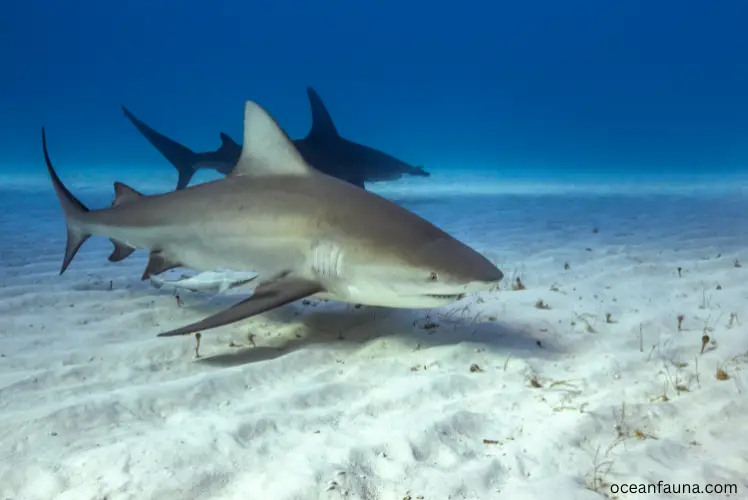
Bull sharks have notoriously aggressive behaviour, so they should be cautiously approached while swimming in Florida waters.
Lemon Sharks
Lemon sharks are usually found in shallow coastal waters along the East Coast of Florida. They can also be found around Cuba, Brazil, Mexico and Venezuela.
Lemon sharks are relatively docile predators that feed mostly on fish, rays and crustaceans like crabs, shrimp and lobsters.
Tiger Sharks
Tiger sharks live throughout tropical regions worldwide, but they can also be found in some parts of southern Florida during certain times of the year, such as late summer/early fall, when water temperatures rise slightly.
Tiger sharks have an unmistakable patterned back with dark stripes that fade away as the shark ages making them easy to identify from other species of shark.
Scalloped Hammerhead Sharks
Scalloped hammerhead sharks are common throughout Florida’s coastal waters but tend to stay out in deeper areas near reefs or sandbars where their prey is plentiful.
Like all hammerheads, they rely on their wide field of vision provided by their distinct head shape when hunting for food at night or deep under the waves during the day.
Great White Sharks

The great white shark is an iconic symbol of horror and the deep sea, yet unfortunately, they do occasionally swim off Florida’s coast due to its warmer waters. In comparison, states such as California or Massachusetts are prone to more frequent sightings because their ocean temperatures tend to be cooler.
Despite being extremely feared by beachgoers, these animals pose very little danger given how uncommon sightings are – so don’t let fear stop you from enjoying your next trip along the coast!
Blacktip Sharks
Blacktip sharks are one of the most common species in Florida’s waters. They tend to inhabit warm, shallow waters that span from Texas all the way down to Brazil.
Blacktip sharks have distinctive black tips on their fins and can often be seen leaping out of the water while hunting prey like fish, rays and small sharks.
Nurse Sharks
Nurse sharks are also abundant in Florida’s coastal waters, particularly around reefs and other structures. They tend to be quite docile creatures that spend their days hiding in crevices or under ledges while consuming smaller fish and invertebrates like crabs and shrimp.
These shark species may look intimidating but quite harmless, as nurse sharks rarely bother humans.
Great Hammerhead Sharks
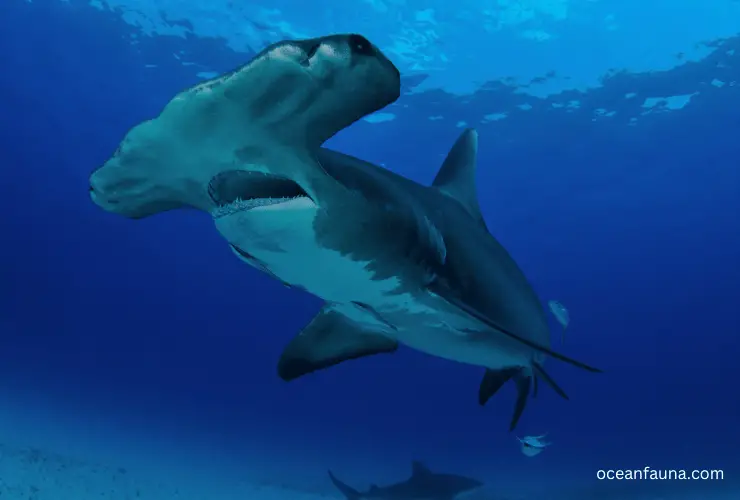
During certain times of the year when the waters around Florida become slightly warmer, keen-eyed observers may be lucky enough to spy a majestic great hammerhead shark in its shallower coastal habitats. While rare near continental shelves and reef systems like their scalloped hammerhead cousins, these magnificent creatures can also occasionally be found in open ocean territories.
In contrast to other species, great hammerheads will boldly approach close-by beaches or lagoons due to their size, which makes them unassailable to humans.
Sandbar Sharks
The sandbar shark is one of only two requiem species natively living within US territorial waters – specifically off various states located along its eastern seaboard, including quite famously -Florida’s coastline!
Although it will generally travel alone or in small groups & tends to feed opportunistically on whatever prey becomes available rather than actively targeting any particular type of food item itself like its bigger counterparts might.
Sandbar Sharks inhabit estuaries, bays, and gulfs, swimming close to shorelines and mangroves and seeking shelter amongst coral reefs and sea grass beds where younger specimens often hide to protect themselves from larger predators until reaching maturity themselves.
When ready, they join adult populations residing out in deeper seas further offshore, away from prying human eyesight.
How Frequently Can You See a Shark from Florida’s Coastline?
The presence of sharks close to the shoreline of the Florida coastline is becoming more and more common. According to research by the University of Miami, the number and concentration of sharks in the waters off Florida’s coast have been steadily increasing.
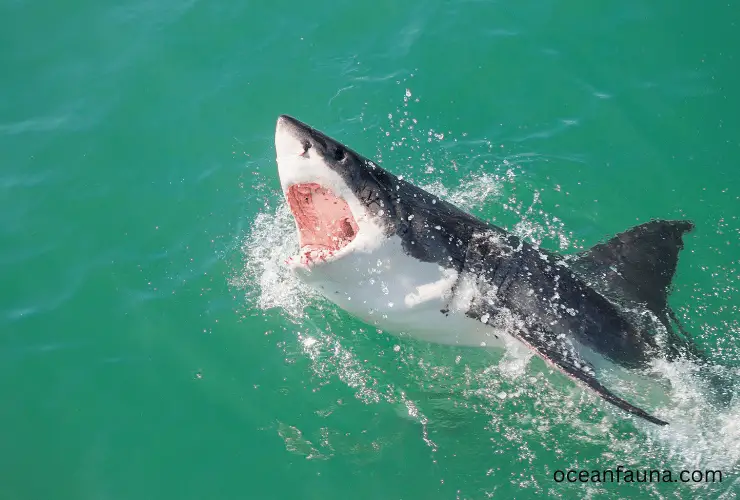
While these researchers previously believed that sharks would avoid swimming close to the beaches due to their potential danger, a recent report showed 15-20 sharks swimming within 450 feet of Florida’s shoreline.
This alarming trend has caught the attention of marine biologists and conservationists who are studying this phenomenon to understand why it is occurring. One hypothesis is that nearby dams block traditional shark migration paths, forcing them closer to shore.
Related: Are There Sharks in Cancun?
Additionally, warmer ocean waters may provide more hospitable conditions for sharks, giving them greater access to food sources close to shore. Finally, shark populations may be increasing due to improved conservation efforts and enhanced enforcement of fishing regulations.
Experts also believe that human behaviour can play a role in how frequently we encounter sharks on Florida’s coastline. For example, some beachgoers may not be aware that swimming at dawn or dusk increases one’s chances of encountering a shark, as these times are when many species feed actively near shorelines.
Also, discarding excess bait or trash into the water can draw predators such as sharks closer to shore, creating an even higher risk for beachgoers.
The threat from sharks is real but understanding why they come so close to shore can help us minimize interactions with them and make our coastal experience safer for all involved.
How Many Shark Attacks Have Been Recorded in Florida?
Shark attacks have been a major concern for beachgoers in Florida for decades. In total, there have been 896 shark attacks recorded in the state since 1837, according to the Florida Museum’s shark attack file. The number of reported attacks has increased significantly in recent years – with an average of 30 incidents per year over the last decade.
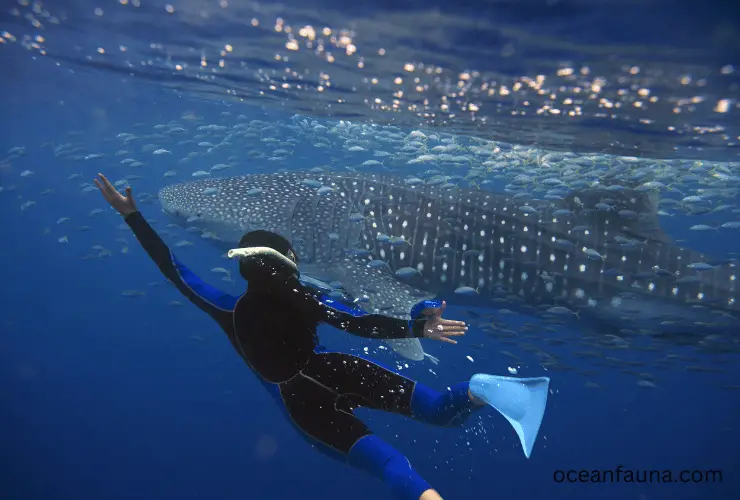
Florida has consistently ranked as one of the highest states with regard to shark attack incidents. According to research conducted by Shark Attack Survivors and the International Shark Attack File (ISAF), Florida usually has around twice as many unprovoked shark attacks as any other state in the US annually. In 2021, 29 confirmed unprovoked shark attacks in Florida were reported, compared to just 25 in 2022.
The most common species involved in these incidents are commonly referred to as ‘bronze whalers’ or spinner sharks due to their habit of leaping out of the water and spinning around before re-entering it – but other species, such as bull sharks and black tips may also be involved, depending on location and seasonality.
Out of all recreational activities associated with water sports, surfing was found to be the activity that most frequently brought swimmers into contact with sharks.
Also Read: Are There Sharks in The Atlantic Ocean?
Analysis conducted by Shark Attack Survivors revealed that 43% of all reported shark bites occurred within 10 meters of shore, while 73% happened within 20 meters of shore. This indicates that humans are more likely to encounter sharks when they enter shallow waters along beaches because this is a natural habitat for some predatory fish.
More recently, however, scientists are beginning to understand that many attacks can be attributed not only to curiosity but also because of human-driven changes such as overfishing which can affect the food supply for some species and cause them to hunt closer to shorelines where people tend to congregate more often.
Additionally, climate change is having an impact on sea temperatures which causes certain species, such as hammerhead sharks which enjoy warmer waters migrate further Northwards towards areas like Florida – thus increasing their presence in coastal regions used by humans for recreation.
So, although shark attacks remain rare despite the abundance of beachgoers in Florida, it is prudent for travellers and locals to stay mindful while engaging in water activities by practising basic safety tips such as avoiding swimming at dawn or dusk when visibility is low or staying away from areas where predators could be present.
At What Season Can Sharks Be Found on Florida’s Coast?
Sharks can be found on the coast of Florida throughout the year. While there is a peak season for shark activity in Florida waters, they are present year-round.
The peak season for shark activity in Florida waters is between May and September. During this time, warm temperatures draw many species of bony fishes to shallow estuaries along the coast to feed and spawn. These fish attract small fish such as herring, jacks, and anchors, which in turn attract larger predators like sharks.
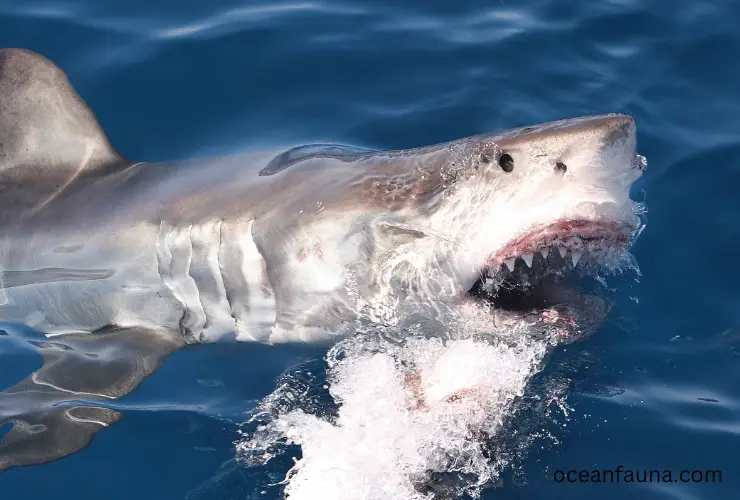
During this time, many beachgoers enter the water more frequently, creating a greater chance of encounters with these predators.
In addition to the warmer months being a prime time for increased shark activity, some species, such as bulls and hammerheads, remain off the coast all year long due to their higher tolerance for cool water temperatures.
Blacktip sharks often migrate south from northern states like North Carolina or New England during winter when water temperatures drop up north.
Similarly, during summers, it’s common to see blacktip sharks travelling south from areas of South Carolina or Georgia, seeking warmer waters nearshore in Florida, where there is abundant food available for them to eat.
Despite these seasonal patterns, remember that sharks are still present all year round, so even though you may be less likely to encounter one during winter months compared to summer ones, you should always be aware of your surroundings while in the ocean regardless of what month it is.
To help minimize any potential interactions with sharks while swimming or surfing, it’s best if you stay close to shore and away from sandbars or other areas where baitfish might be found, as these will naturally attract more predators into those areas, including sharks.
How To Stay Safe When Swimming in Florida?
Swimming in the ocean can be a thrilling experience, but visitors to Florida should be aware of the potential risks associated with swimming in waters populated by sharks. While shark attacks are very rare, there are steps that swimmers can take to reduce their risk of being attacked.
Also Read: Are There Any Venomous Sharks?
The first step to staying safe from sharks when swimming in Florida is to always be aware of your surroundings. Before entering the water, take a few minutes to observe any visible signs of marine life nearby and be on the lookout for dark shapes moving beneath the surface.
Additionally, you should avoid areas where there are known aggregations of large numbers of fish or other aquatic creatures, as sharks may be drawn to these locations due to the abundance of food sources.
In addition to paying attention to their environment, swimmers should also be mindful of their body placement while in the water. Sharks have powerful senses; using them, they can detect movement from far away. To evade detection, swimmers should remain still and avoid thrashing about if possible, making it harder for a shark’s senses to pick up on your presence.
Also, if you find yourself near a school of fish, try not to swim too close, as the presence of so many animals could attract sharks from far away. It’s also best practice to leave the waters alone and always inform another person where you plan on going before entering the water.
Finally, wearing brightly coloured swimwear is recommended as this will help you stand out more against dark seabed and make it easier for lifeguards or boat operators monitoring the area can spot you more easily if needed.
If a shark does come into contact with you while in the water, do not panic; try your best to stay calm and maintain eye contact while slowly backing away without making any sudden movements or splashing around with your limbs.
Most importantly, however, is remembering that these interactions are extremely rare and that following these simple tips can help ensure peace of mind while enjoying time spent swimming in Florida’s oceans!
Conclusion
With knowledge of the various types of sharks present in Florida, you can be prepared for a safe and enjoyable dive or vacation. As such, stay aware of your surroundings when exploring this beautiful state to minimize any potential encounters with these aquatic creatures!

